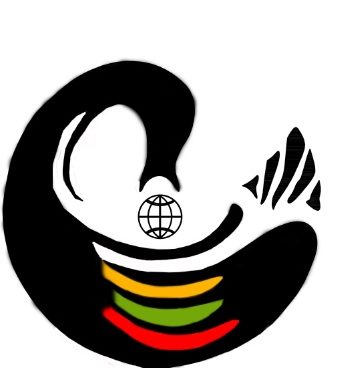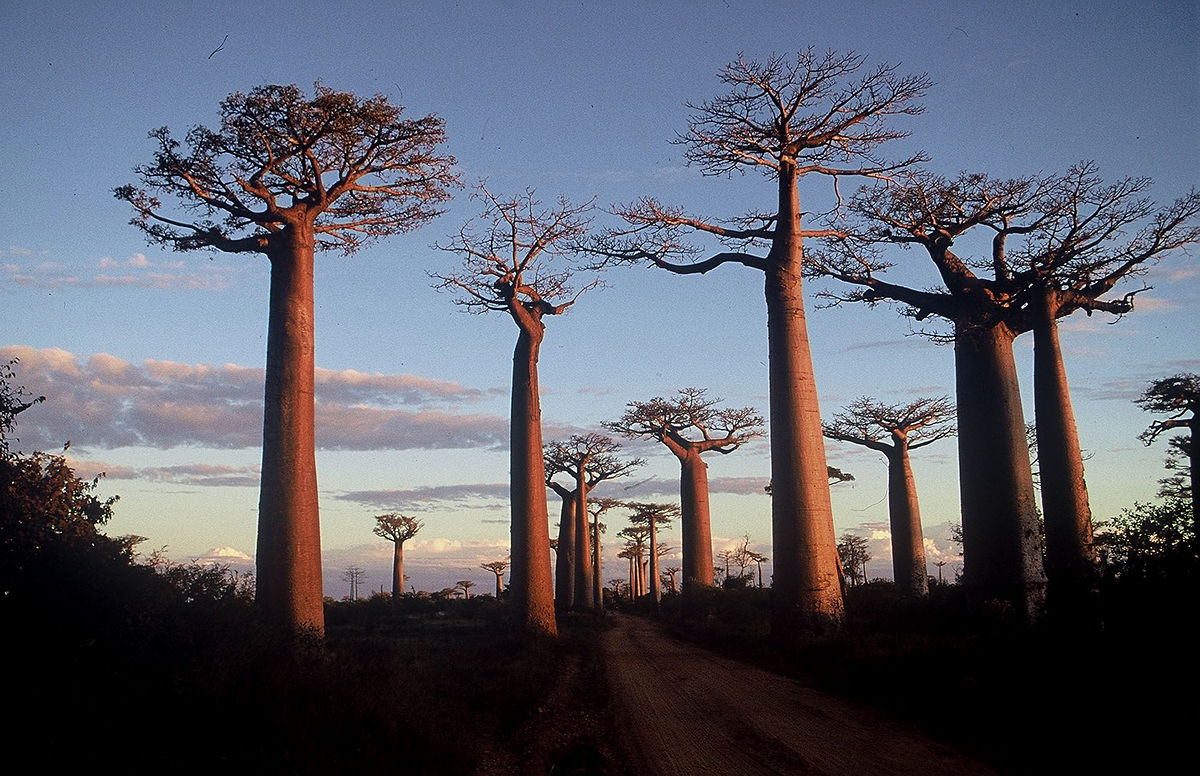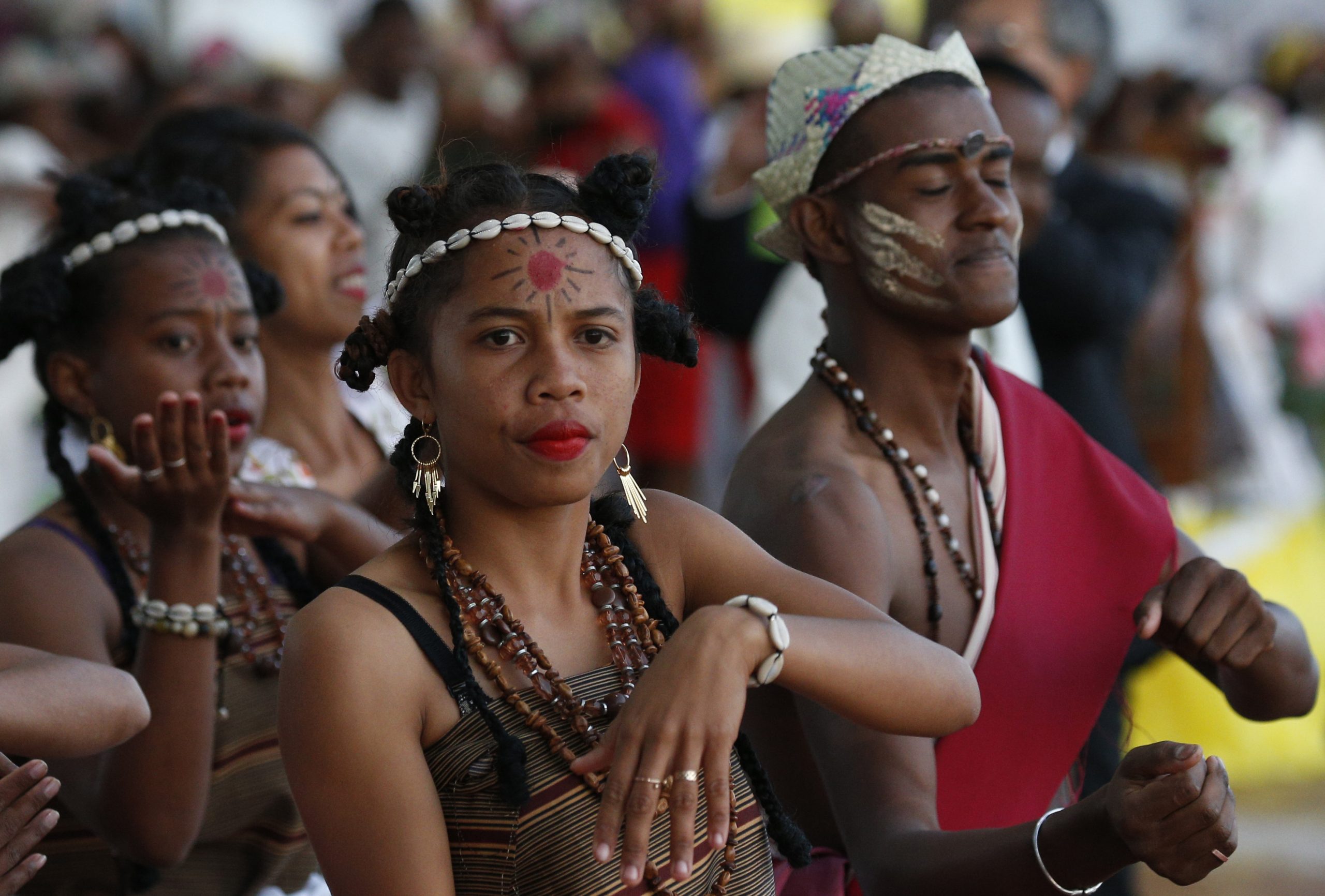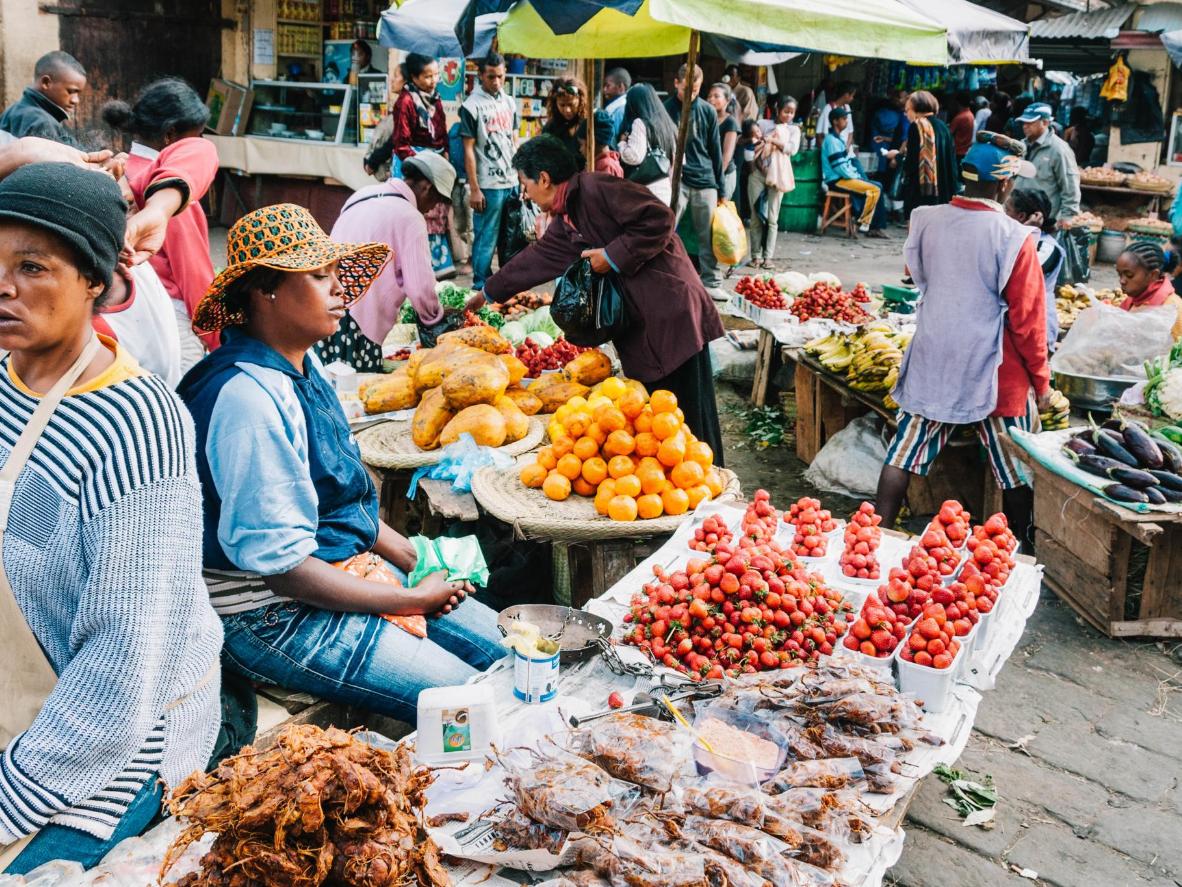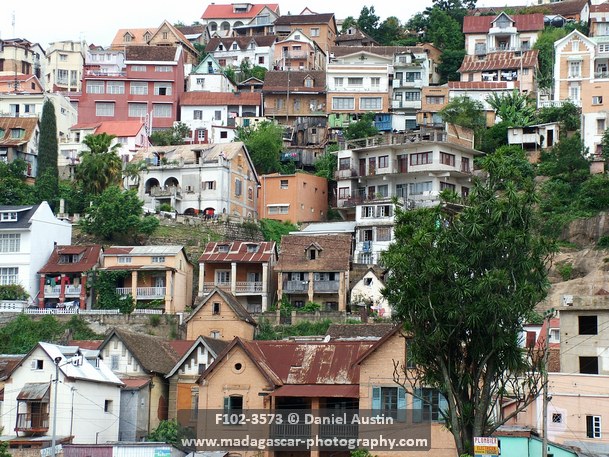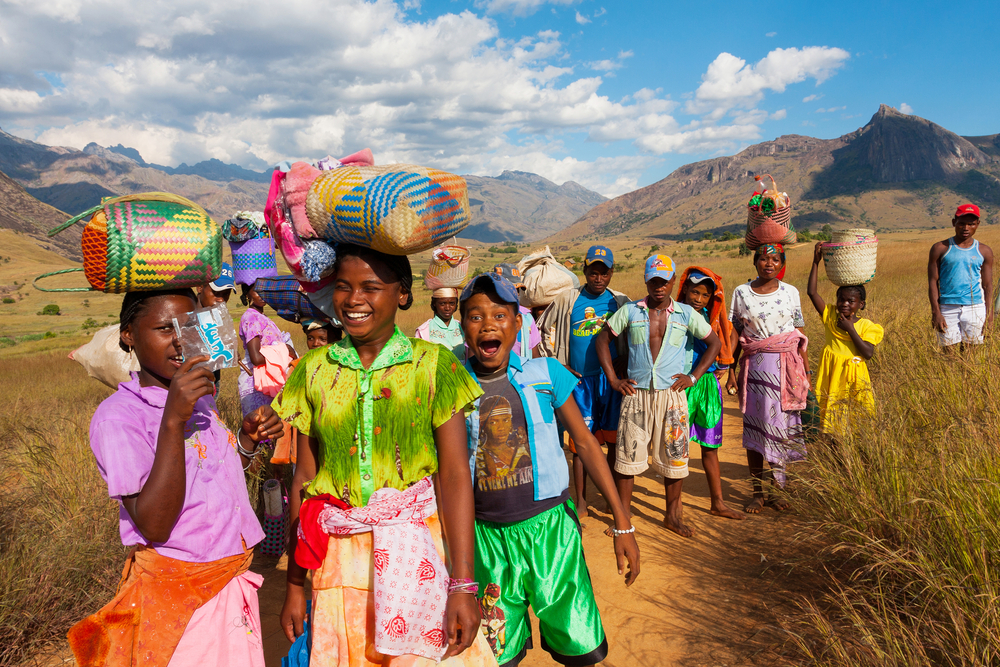Madagascar is located off the southeastern coast of Africa. Madagascar is the fourth largest island in the world, after Greenland, New Guinea, and Borneo. The Malagasy peoples, moreover, do not consider themselves to be Africans, but, because of the continuing bond with France that resulted from former colonial rule, the island developed political, economic, and cultural links with the French-speaking countries of western Africa. Madagascar is located in the southwestern Indian Ocean and is separated from the African coast by the 250-mile- (400-km-) wide Mozambique Channel. More than nine-tenths of the population is Malagasy, which is divided into about 20 ethnic groups. The largest and most dominant of the groups is the Merina people, who are scattered throughout the island. The name Merina (Imerina) is said to mean Elevated People, deriving from the fact that they lived on the plateau. The second largest group is the Betsimisaraka (The Inseparable Multitude), who live generally in the east. The third most numerous group is the Betsileo (The Invincible Multitude), who inhabit the plateau around Fianarantsoa. Other important peoples are the Tsimihety (Those Who Do Not Cut Their Hair), the Sakalava (People of the Long Valley), the Antandroy (People of the Thorn Bush), the Tanala (People of the Forest), the Antaimoro (People of the Banks), and the Bara (a name of uncertain origin). Smaller groups are the Antanosy (People of the Island), the Antaifasy (People of the Sand), the Sihanaka (People of the Lake), the Antakarana (People of the Rocks), the Betanimena (People of the Red Soil), who are now largely absorbed by the Merina, the Bezanozano (Those with Many-Braided Hair), and the Mahafaly (Those Who Make Taboos). Most inhabitants of Madagascar speak Malagasy, the national language, which is written in the Latin alphabet. Although Madagascar is located geographically close to Bantu-speaking Africa, Malagasy is a standardized version of Merina, an Austronesian language. Some two-fifths of the population practices traditional religion, which is based upon ancestor worship. The dead are buried in tombs and are believed to reward or punish the living. There is a supreme being called Zanahary (the Creator) or Andriamanitra (the Fragrant One). Rice, sugarcane, coffee, grapefruits, avocados, plums, and other produce are grown and exported. Malagasy culture is largely composed of Indonesian elements, with other influences evident. Arabic and Islamic influences include sikidy, a system of divination, and calendrical features, such as the Arabic-derived names of the days of the week, which also apply to the markets held on those days.
Things to Do:
See the avenue of Baobabs
Go swimming with Whale Sharks
Explore the former French capital Antananarivo
